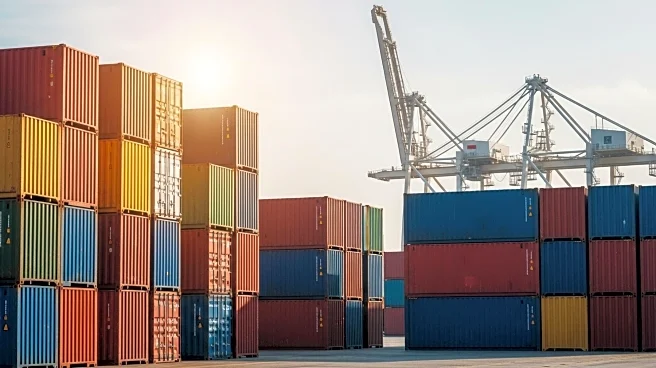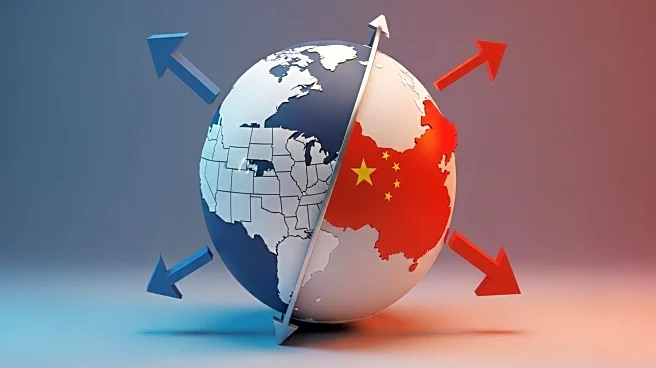What's Happening?
The Global Shipping Report from Descartes, a logistics software provider, indicates a decline in U.S.-bound container imports for September. The volume reached 2,307,933 TEU, marking an 8.4% decrease from August's figures, which were the second-highest monthly total in 2025. Despite the drop, year-to-date volumes are up 1.9% compared to the previous year, suggesting moderate resilience in demand. The report highlights a significant reduction in imports from China, which fell 12.3% sequentially and 22.9% annually. This decline is attributed to seasonal softening and tariff-related caution, with the expiration of a 90-day tariff truce between the U.S. and China looming in mid-November.
Why It's Important?
The decrease in container imports reflects the ongoing impact of trade policies and economic uncertainties on U.S. import activities. The sensitivity to tariff deadlines and policy changes could affect supply chain strategies and import volumes, particularly from China. This situation underscores the broader implications for U.S. businesses relying on international trade, as they navigate fluctuating import costs and potential disruptions. The shift in import volumes also affects port operations, with East and Gulf Coast ports gaining market share at the expense of West Coast ports.
What's Next?
As the tariff truce between the U.S. and China approaches its expiration, importers may continue to adjust their shipment flows in response to policy outcomes. The potential for renewed tariffs could further impact import volumes and trade relations. Stakeholders, including businesses and policymakers, will need to monitor these developments closely to mitigate risks and adapt to changing trade dynamics.
Beyond the Headlines
The decline in imports from China highlights the broader geopolitical tensions affecting trade relations. The introduction of new Section 301 vessel fees and the expiration of tariff pauses could exacerbate these tensions, influencing long-term trade strategies and economic partnerships. The evolving landscape may prompt businesses to diversify their supply chains and explore alternative markets.











